‘Cosmic Monster’ Zoomorph At Quiriguá Ruled By Cauac Sky, Great Maya Leader
A. Sutherland - AncientPages.com - Inhabited since the 2nd century AD, Quirigua was the capital of an autonomous and prosperous state during the reign of Cauac Sky (723–84). He was the greatest leader of the ancient Maya city-state of Quiriguá.
View of the north face of Zoomorph P at Quiriguá, Guatemala - Zoomorph P (which explorer Maudslay nicknamed The Great Turtle) was dedicated in 795 by "Sky Xul" and is a masterpiece of Mesoamerican art. It weighs around 20 tons. Image credit: Daniel Mennerich
Cauac Sky (723–84) - The First Most Powerful Ruler At Quirigua
His reign lasted about 61 years, and during this period of time, Quirigua gained complete political autonomy and developed into an important administrative center with prestige in the region and well-controlled and well-organized trade including the transport of jade and obsidian from their highland sources to the Caribbean coast.
Two other rulers who succeeded him are known to have reigned at Quiriguá in ensuing years—Sky Xul and Jade Sky—each for about ten years. But none of them reached the heights achieved by Cauac Sky.
The beginnings, growth to power and final demise of Quirigua are not exactly known, despite several alternative explanations regarding the ancient site of Quirigua. The archaeological findings at Quirigua indicate it began to form several centuries before the first historically identified and most powerful ruler at Quirigua, Cauac Sky, came to power.
After Cauac Sky's died in 784 AC. the power of Quirigua was not only maintained but even increased and continued into the 9th century AC. The existence of this Maya center can be traced both archaeologically and historically at least to 810 A.C.
It is not known what happened later at Quirigua and why and when the place was abandoned.
Ruins And Beautiful Monuments At Quirigua
The ruins of Quirigua contain some beautiful 8th-century monuments and an impressive series of ornately carved stelae. There are also hieroglyphic inscriptions (unique glyphs with animal and human figures), calendar dates, and statues that help to shed light on the past of the Mayan site.
Stela D representing the ruler Cauac Sky, at Quirigua. Image crediot: Stuardo Herrera from Guatemala via wikipedia
Among many sandstone boulders (zoomorphss) carved to represent animals, there is an exceptionally beautiful Maya bas-relief sculpture created in AD 795. One side of the large zoomorph P depicts a larger-than-life portrait of "Sky Xul" himself seated cross-legged in the open jaws of an enormous crocodile-mountain hybrid monster. The design of this zoomorph - with amazingly executed sculpture - is extremely complex. It is located in the Ballcourt Plaza, just south of the ballcourt, and accompanied by an altar depicting an unidentified deity leaping from a split in the earth.
Zoomorph P is accompanied by an altar depicting an unidentified deity emerging from a split in the earth. A hieroglyphic text on the zoomorph describes the founding of Quiriguá under the supervision of the king of Copán. The monument stands seven feet high and over eleven feet wide, covered with figures, masks, and small glyphs.
The zoomorph P depicts a mythical animal: the Cosmic Monster, a water beast that inhabited the Underworld’s primordial sea.
Zoomorph B. It was dedicated in 780 by K'ak' Tiliw Chan Yopaat, it is a multi-ton boulder sculptured into a half-crocodile half-mountain beast. The hieroglyphic text on this monument consists entirely of full-figure glyphs.[106] Traces of red pigment have been found on this zoomorph, which is 4 meters (13 ft) long. A dedication cache was found buried in a pit under Zoomorph B, it included seven flint blades between 14 and 46 cm (5.5 and 18.1 in) in length.
It is believed it represents the third stone of Creation - as indicated by the various symbols of aquatic imagery employed. Small images of the rain god Chaac are visible around the mouth of this water beast, and water is poured over the throne by numerous mythological animals.
This monument was created during the reign of Sky Xul, commemorating the end of an era in the Maya calendar.
Quiriguá's enormous carved boulders represent some of the most intricately and perfectly carved designs in the Maya world. Each huge stone was transported from the quarry and erected in place before the carving began. The standing stone sculptures of Quiriguá survived and can be found among the trees that now cover what once was the Quiriguá's great plaza, the largest known public space in the entire Maya area.
The monumental complexes which are set out around the Great Plaza, the Ceremonial Plaza and the Plaza of the Temple are remarkable for the complexity of their structure - a highly elaborate system of pyramids, terraces, and staircases which results in a complete remodeling of the natural relief and which creates a singular dimension as at Copan.
Once, Quiriguá with its impressive Great Plaza, the Plaza of the Temple, and the Ceremonial Plaza flourished. Like in other Maya cities, also in Quiriguá, the sculptures played an important role as political propaganda for the rulers. Very informative and extensive glyphic texts tell about political and historical events.
The Maya glyph texts at Quiriguá tell about conquests, wars, marriages, deaths, and enthronements. These ancient texts represent a testimony of the advanced mathematical and astronomical knowledge of the ancient Maya people.
Written by – A. Sutherland - AncientPages.com Senior Staff Writer
Copyright © AncientPages.com All rights reserved. This material may not be published, broadcast, rewritten or redistributed in whole or part without the express written permission of AncientPages.com
Expand for referencesReferences:
Sierlin H. The Maya: Palaces and Pyramids of the Rain Forest
Foster Lynn V. Handbook to Life in the Ancient Maya World
More From Ancient Pages
-
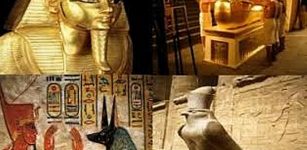 10 Fascinating Facts About Pharaohs
Ancient History Facts | Jun 21, 2016
10 Fascinating Facts About Pharaohs
Ancient History Facts | Jun 21, 2016 -
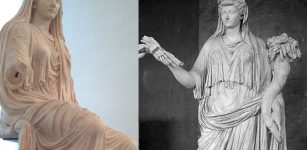 World’s First Diva Was Livia – Wife Of Emperor Augustus
Ancient History Facts | Aug 2, 2016
World’s First Diva Was Livia – Wife Of Emperor Augustus
Ancient History Facts | Aug 2, 2016 -
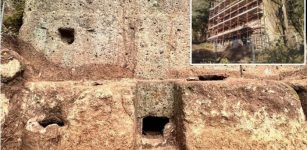 Who Is Buried In The Giant Etruscan Tomb At San Giuliano Necropolis?
Archaeology | Mar 13, 2024
Who Is Buried In The Giant Etruscan Tomb At San Giuliano Necropolis?
Archaeology | Mar 13, 2024 -
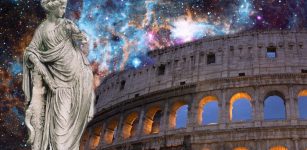 Angerona – Goddess Of Silence During Cosmic Crises And Protector Of Ancient Rome
Featured Stories | Feb 15, 2019
Angerona – Goddess Of Silence During Cosmic Crises And Protector Of Ancient Rome
Featured Stories | Feb 15, 2019 -
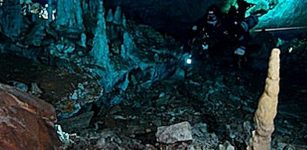 Paleoindian Ochre Mine Found In Submerged Caves In Mexico’s Yucatan Peninsula
Archaeology | Jul 6, 2020
Paleoindian Ochre Mine Found In Submerged Caves In Mexico’s Yucatan Peninsula
Archaeology | Jul 6, 2020 -
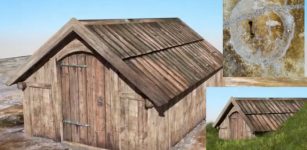 Very Rare Discovery: Viking Age Mortuary House Unearthed In Central Norway
Archaeology | Sep 29, 2019
Very Rare Discovery: Viking Age Mortuary House Unearthed In Central Norway
Archaeology | Sep 29, 2019 -
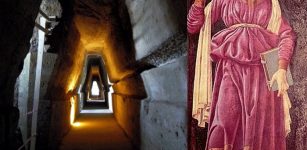 Mysterious Cave Of Prophetess Cumaean Sibyl – Ancient Portal To The Underworld
Featured Stories | Dec 25, 2017
Mysterious Cave Of Prophetess Cumaean Sibyl – Ancient Portal To The Underworld
Featured Stories | Dec 25, 2017 -
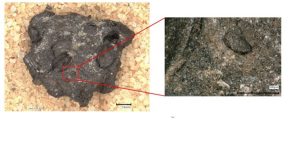 Millet Bread And Pulse Dough From Early Iron Age South India
Archaeology | Dec 20, 2021
Millet Bread And Pulse Dough From Early Iron Age South India
Archaeology | Dec 20, 2021 -
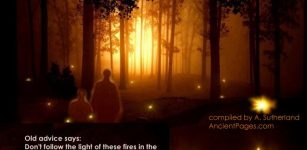 Will-o’-the-wisp: Eerie Lights Over Swamps And Marshes That Frightened And Led People Astray
Featured Stories | Apr 23, 2020
Will-o’-the-wisp: Eerie Lights Over Swamps And Marshes That Frightened And Led People Astray
Featured Stories | Apr 23, 2020 -
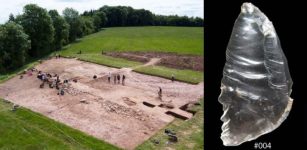 Prehistoric Brits Used Rare Rock Crystals To Mark Burial Sites – New Study
Archaeology | Aug 10, 2022
Prehistoric Brits Used Rare Rock Crystals To Mark Burial Sites – New Study
Archaeology | Aug 10, 2022 -
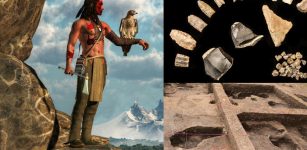 Is North America’s Oldest House In Ohio A 12,250-Year-Old Clovis Dwelling? Archaeologists Re-Investigate The Paleo Crossing Site
Archaeology | Apr 28, 2022
Is North America’s Oldest House In Ohio A 12,250-Year-Old Clovis Dwelling? Archaeologists Re-Investigate The Paleo Crossing Site
Archaeology | Apr 28, 2022 -
 Mysterious Rongorongo Script Remains Undeciphered – Does It Contain A Prophetic Warning?
Featured Stories | Mar 24, 2014
Mysterious Rongorongo Script Remains Undeciphered – Does It Contain A Prophetic Warning?
Featured Stories | Mar 24, 2014 -
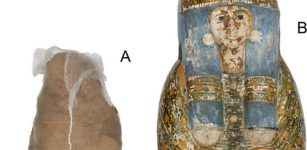 New Study Reveals Rare Mortuary Treatment Of Egyptian Mummy
Archaeology | Feb 8, 2021
New Study Reveals Rare Mortuary Treatment Of Egyptian Mummy
Archaeology | Feb 8, 2021 -
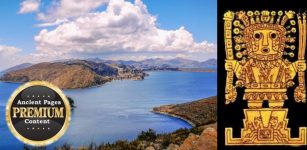 Sacred And Mysterious Lake Titicaca Still Holds Many Ancient Secrets
Featured Stories | Jul 13, 2017
Sacred And Mysterious Lake Titicaca Still Holds Many Ancient Secrets
Featured Stories | Jul 13, 2017 -
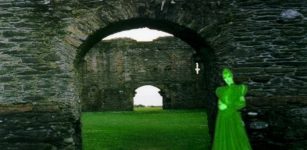 Enigmatic Green Lady In British Folklore
Featured Stories | Jan 9, 2017
Enigmatic Green Lady In British Folklore
Featured Stories | Jan 9, 2017 -
 Spectacular Ancient Underground ‘Stonehenge’ Dolmen De Soto Reveals Its Secrets
Archaeology | Apr 18, 2019
Spectacular Ancient Underground ‘Stonehenge’ Dolmen De Soto Reveals Its Secrets
Archaeology | Apr 18, 2019 -
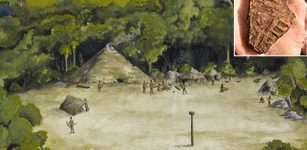 Uncovering The Lost Indigenous Settlement Of Sarabay, Florida
Archaeology | Jun 9, 2021
Uncovering The Lost Indigenous Settlement Of Sarabay, Florida
Archaeology | Jun 9, 2021 -
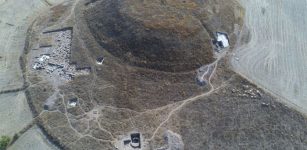 Mysterious Ancient Circular Structure Discovered In Turkey – Has Zippalanda, The Lost City Of The Hittites Been Found?
Archaeology | Dec 27, 2022
Mysterious Ancient Circular Structure Discovered In Turkey – Has Zippalanda, The Lost City Of The Hittites Been Found?
Archaeology | Dec 27, 2022 -
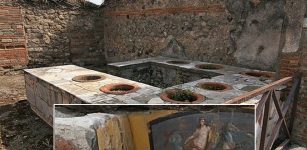 Another 2,000-Year-Old ‘Snack Bar’ Discovered In Pompeii
Archaeology | Apr 10, 2019
Another 2,000-Year-Old ‘Snack Bar’ Discovered In Pompeii
Archaeology | Apr 10, 2019 -
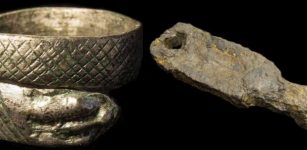 Discovery Of Roman Settlement, Workshops And Artifacts Will Shed Light On Their Life In Northern England
Archaeology | Apr 13, 2017
Discovery Of Roman Settlement, Workshops And Artifacts Will Shed Light On Their Life In Northern England
Archaeology | Apr 13, 2017


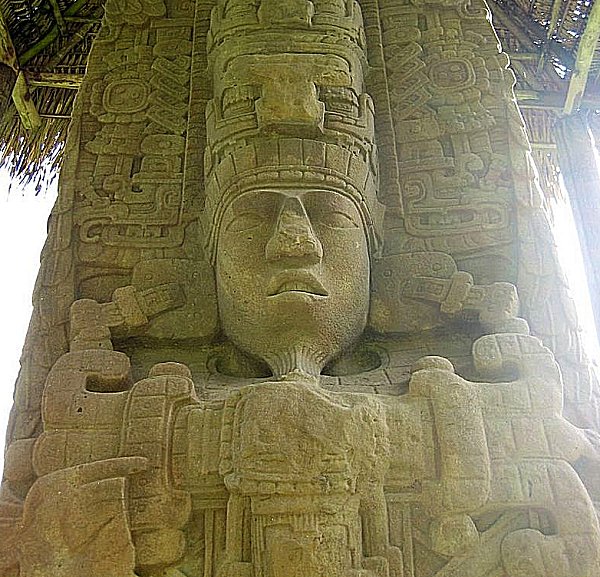
![Zoomorph B – photo by Maudslay. It was dedicated in 780 by K'ak' Tiliw Chan Yopaat, it is a multi-ton boulder sculptured into a half-crocodile half-mountain beast. The hieroglyphic text on this monument consists entirely of full-figure glyphs.[106] Traces of red pigment have been found on this zoomorph, which is 4 metres (13 ft) long.[107] A dedication cache was found buried in a pit under Zoomorph B, it included seven flint blades between 14 and 46 cm (5.5 and 18.1 in) in length.](https://www.ancientpages.com/wp-content/uploads/2018/11/zoomorphBquirigua11.jpg)